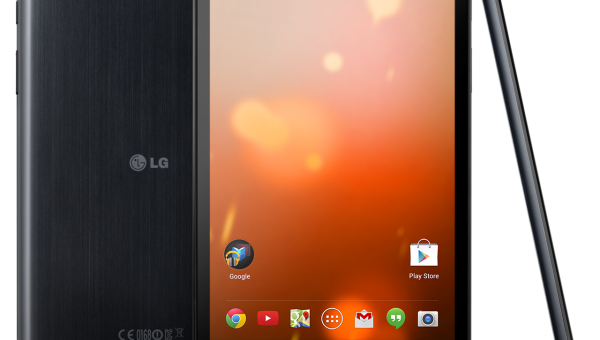Last Updated on July 19, 2022 by Mat Diekhake
Once you root the LG Optimus G Pad using the Towelroot method, you can start installing better apps from the Google Play Store. Since this is the Towelroot method, you can also start installing a custom recovery and a custom ROM too — there is nothing this Towelroot app cannot do!
One of the applications you might want to check out after rooting the G Pad device is the FPS Meter app. The FPS meter is great for gamers and enabled a floating overlay to give your games a better 3D effect like you would get from PC gaming. That’s just one example of why rooting your Android operating system is great, but there are hundreds of other useful apps available for people who are not interested in gaming.

Files You Need
- Point your browser to http://towelroot.com during the guide when it asks for the web address.
- Your LG Optimus G Pad must be running a kernel before June 3 of 2014 or else your exploit will be patched. You can anytime downgrade the operating system to use a kernel version that is pre-June 3 and the Towelroot exploit will work. Just keep trying to flash earlier versions of Android KitKat until it works.
Rooting the LG Optimus G Pad
- Navigate to the Settings on your LG G Pad and scroll down until you see the Security menu. Enter Security and scroll down the menu until you see the Unknown Sources option. Tap the “OK” button after you tap over the Unknown Sources to confirm that it is on.
- Open up any web browser on your device that lets you browse for websites and type the link above in the files section for the web address.
- Tap over the large red symbol (the Lambda) from the Towelroot homepage. The Lambda will fuzz for a few seconds and then the screen will change and give you a notification down the bottom of your LG Optimus display.
- Tap the “OK” button from that notification.
- Wait for the download to complete and then tap over the file.
- Click the “Install” option. Wait until you get the green tick and it says “app installed” in the top left corner of the display.
- Tap over the “Open” option on the bottom of the screen.
- Lastly, tap the “Make it Ra1n” button.
- Wait for the “you should have root, no reboot required” message to appear on the display.
- Go back to your home screen or app drawer and tap to open the Google Play Store application.
- Open the Google Play Store app on your device and install the SuperSU app by Chainfire.
- When you browse for the SuperSU you will likely see 2 versions, one by ClockworkMod and one by Chainfire. Choose the Chainfire option.
- It might prompt you that the SU binary needs updating. Follow the prompts to accept and update for the SU binary.
- You’ll now get a message about how you would like to update the SU binaries. If you do not have a custom recovery installed such as TWRP recovery or ClockworkMod recovery, tap the “normal” button on the left side.
- The SU will prompt Samsung device owners if it would like to disable the Knox security. You do not have to worry about that with your LG device.
- Head back to the Google Play Store and download the root checker application. Each app is slightly different with how it works. For the root checker basic app, it will prompt you about a Superuser request. Click the “Grant” button.
- The screen should change with a “congratulations!” screen confirming that “this device does have root access” in green writing you cannot miss.
Your SuperSU app is incredibly important for controlling which apps have root access to your LG Optimus G Pad device. Make sure you do not allow root permissions to any apps you do not trust.
